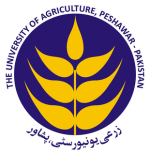The Future of Horticultural Crops: Navigating Climate Uncertainty in the Context of Farmers Perception and Metrological Data
The Future of Horticultural Crops: Navigating Climate Uncertainty in the Context of Farmers Perception and Metrological Data
Muhammad Zamin1*, Fazli Rabbi2, Hamayoon Khan3, Muhammad Zahid1, Raheel Saqib4, Shafi Ullah5 and Muhammad Shakur6
ABSTRACT
Food security and farmers’ livelihood is greatly affected by climate change. It is imperative to design strategies for combating the impacts of climate change and thus minimizing the risk for food security and survival of plants. The study was conducted to investigate farmers’ perceptions about climate change based on climatic parameters; temperature, rainfall and snowfall during the last six decades in the temperate zone of Pakistan, whereby the primary data was compared with the metrological data. Based on the metrological data, it was found that the annual average temperature was increased from 13.2 oC (1980) to 15.47 oC (2017) while annual average rainfall was reduced from 131.88 mm/year (1980) to 109.2 mm/year (2017) over the the last 30 years. The farmer’s perceptions comply with the metrological data in which 95% of the farmers perceived an increase in temperature while 97.7 % farmers perceived a decrease in the rainfall. Similarly, 97% farmers perceived earlier spring onset and 50.33 % perceived decreasing snowfall intensity and frequency. As far as the farmers’ knowledge level is concerned, 70% of the farmers are unaware about climate change while 30% are familiar with it. Newspapers, Radio and Television were found to be the main source of awareness about climate change. According to the results, 90% farmers were of the opinion that horticultural crops (fruits) yield has been reduced while the occurrence of pests and diseases have increased significantly over the last 3 decades. As far as the mitigation strategy is concerned, 40% of the farmers use compost; 29% use crop rotation; 13% use soil conservation, 9% use planting different varieties, 6% farmers leave the land in fellow condition, while 3% farmers use various agroforestry as measures to cope with changing climate. The study results indicate that significant variations occurred in certain climate factors such as temperature and rainfall which have adverse effects on crop productivity. Thus, it is advised to design agriculture policy which should be based on local data and strengthening of farmers capacity and facilitating them for mitigating the impact of future climate change on local farmers’ agriculture productivity and food security.
To share on other social networks, click on any share button. What are these?







